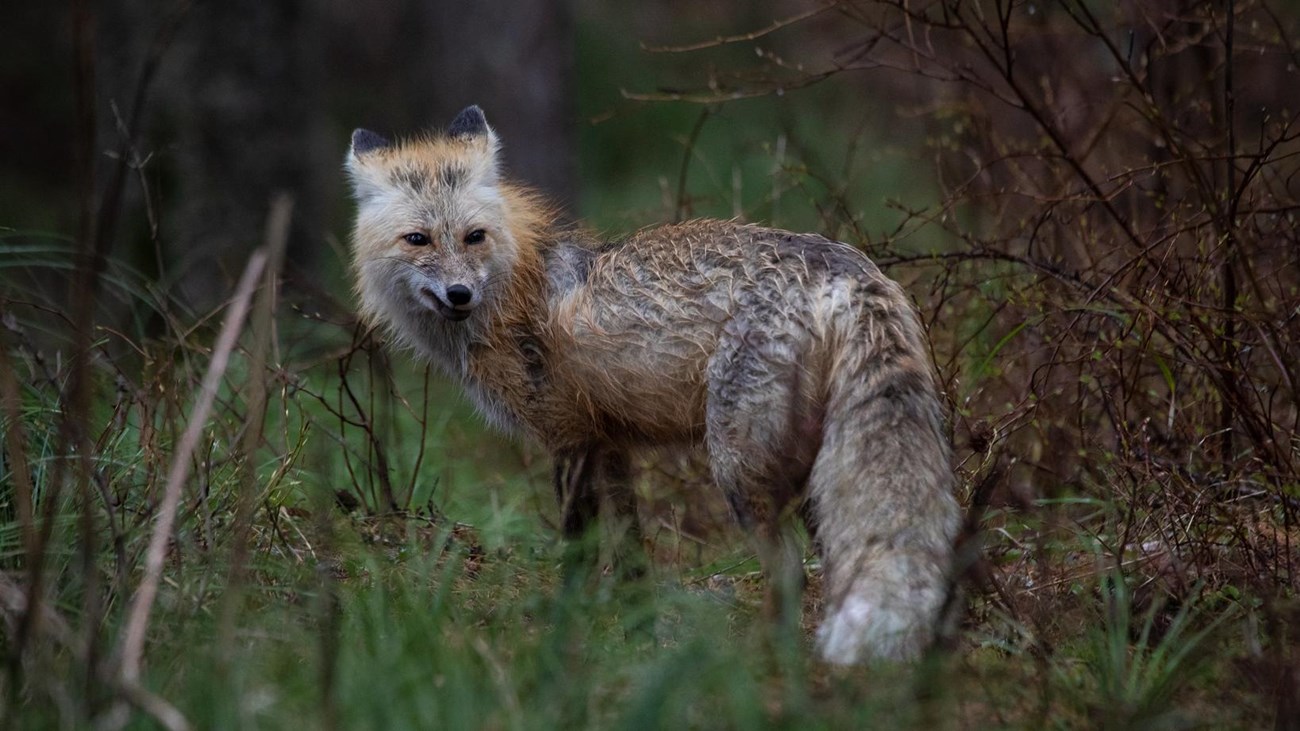Last updated: October 10, 2024
Thing to Do
Red Foxes

NPS photo
Vulpes vulpes
Red foxes are found throughout the Northern Hemisphere. In Glacier, they are adapted to a wide range of habitats, from open grasslands to dense forests. Red foxes occur in several color phases, but they usually have reddish-yellow coats that are somewhat darker on the back and shoulders. Red foxes also have black "socks" on their lower legs and a white-tipped tail.
There are nine subspecies of red fox currently recognized in North America with three native subspecies existing at high elevations in the western United States. The Sierra Mountains (V. v. necatar), Cascade Mountains (V. v. cacadensis), and Rocky Mountains (V. v. macroura) are collectively called mountain foxes and have inhabited these areas since the last Ice Age.
Red foxes are found throughout the Northern Hemisphere. In Glacier, they are adapted to a wide range of habitats, from open grasslands to dense forests. Red foxes occur in several color phases, but they usually have reddish-yellow coats that are somewhat darker on the back and shoulders. Red foxes also have black "socks" on their lower legs and a white-tipped tail.
There are nine subspecies of red fox currently recognized in North America with three native subspecies existing at high elevations in the western United States. The Sierra Mountains (V. v. necatar), Cascade Mountains (V. v. cacadensis), and Rocky Mountains (V. v. macroura) are collectively called mountain foxes and have inhabited these areas since the last Ice Age.
Details
Activity
Wildlife Watching
Pets Allowed
No
Activity Fee
No
Entrance fees may apply, see Fees & Passes information.
Location
Various locations
Foxes have been spotted in Apgar, Logan Pass, St. Mary, and Many Glacier.
Foxes are not often seen because they are nocturnal, usually forage alone, and travel along edges of meadows and forests. Drive carefully and watch the road edges after dark.
Foxes are not often seen because they are nocturnal, usually forage alone, and travel along edges of meadows and forests. Drive carefully and watch the road edges after dark.
Reservations
No
Season
Year Round
Time of Day
Night, Dawn, Dusk
Accessibility Information
In addition to driving the Going-to-the-Sun Road and other park roads, the Running Eagle Falls Nature Trail, the Swiftcurrent Nature Trail, and the Trail of the Cedars are three of Glacier’s most accessible areas.
Improvements in accessibility are being made each year, and with a bit of pre-planning, all visitors can find Glacier to be a rewarding experience. Details on Glacier's accessible facilities and services can be found on the park's website nps.gov/glac/planyourvisit/accessibility.htm.
Improvements in accessibility are being made each year, and with a bit of pre-planning, all visitors can find Glacier to be a rewarding experience. Details on Glacier's accessible facilities and services can be found on the park's website nps.gov/glac/planyourvisit/accessibility.htm.
